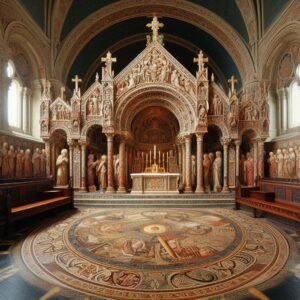Brigantian Druidry, as understood through ancestral teachings and historical reflection, was a system deeply rooted in finding personal truth within the context of individual experience and lineage.
Tag: Brigantia
Jul 08
The Border Reivers
The Border Reivers were a formidable force in the history of Britain, particularly during the tumultuous period from the late 13th century to the early 17th century. These raiders, hailing from both Scottish and English descent, operated along the Anglo-Scottish border, a region marked by constant strife and conflict.
Jul 07
Early Christian syncretism and how the old ones hid amongst the new religion
Syncretism is where two or more differing beliefs become merged. In England, this first happened under Roman rule, where many pre-existing Celtic shrines to specific deities were associated with Roman deities of the same qualities or attributes. Based on extensive research, I am now confident that in Britain, the early Christians undertook a similar process and with that knowledge, we should be able to reverse engineer, to some extent, our local Brigantian Celtic pantheons.
Jul 06
Syncretism through the ages
Jun 14
Venutius
Venutius was a notable figure in the 1st-century history of northern Britain, known primarily as the king of the Brigantes during the Roman conquest. The following text summarises what we can potentially understand about him, and tries to tie him to places and other possibilities that are not supported by the historical record. At the end of the section, what records to exist are explained.
Jun 13
Brigantia during the Dark Ages
Yorkshire’s history during the Dark Ages is a tapestry of cultural shifts and invasions, beginning with the departure of the Romans in the early 5th century. This period saw the region become a melting pot of Celtic Britons, and later, the Angles and Vikings, each leaving a distinct imprint on the cultural landscape.
Jun 13












